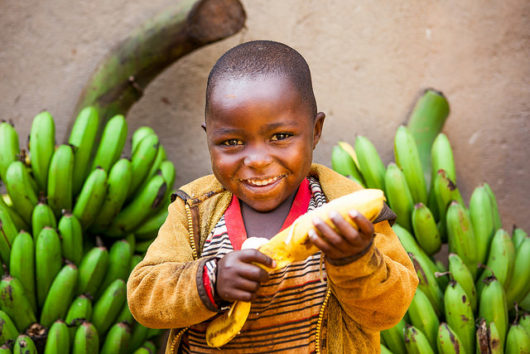Top 5 Facts About Food Assistance in Burundi

Burundi is a small, landlocked country located in East Africa, bordered by Rwanda and the Republic of the Congo. Though Burundi is rich in agriculture, with coffee as its main export, more than 65 percent of citizens live in poverty. About 1.4 million people or 13 percent of the Burundi population require emergency food assistance, including 56 percent of children who suffer from stunting. Food assistance in Burundi is crucial to the survival of these people as without outside food assistance, Burundi would only manage to produce enough food to last every citizen 55 days. In this article, the top five facts to know about food assistance in Burundi are presented.
Top 5 Facts about Food Assistance in Burundi
- As one option for providing food assistance in Burundi, an organization will directly provide emergency food, whether that be through providing meals to children at school or giving families livestock for milk, meat, or eggs. The World Food Programme (WFP) is a United Nations organization that works with the Burundi government and other U.N. agencies to provide immediate emergency food assistance in Burundi. In 2017, WFP fed over 464,000 children through their homegrown school meals program and provided 31 percent of all school meals in the country. This act of food assistance has decreased school dropout rates by 10 percent from 2014 to 2017 because children now know that they will be fed at school, no matter what their situation at home.
- The United States, along with the U.N., also provides emergency food assistance in Burundi. In 2017, The United States gave almost $50 million in emergency humanitarian assistance that includes both medical assistance and food assistance. USAID’s Office of Food for Peace (FFP) works through WFP to provide food for refugees and specialized nutritious food for malnourished children and pregnant women. In 2018 alone, FFP contributed $30.1 million, which amounts to 11,360 metric tons of food to Burundi.
- As a second option for providing food assistance in Burundi, organizations will conduct research to figure out how best to optimize food assistance programs. The International Food Policy Research Institute (IFPRI), with support from USAID, conducted a study called Tubaramure from 2009 to 2014 to see the impact of food assistance on pregnant mothers and children younger than 2 years. They found that food assistance has the greatest effect on a child from the time of their conception to their second birthday, and can reduce the risk of stunting throughout their childhood. This information greatly assists food assistance programs and can help them concentrate their efforts on children under the age of 2.
- As a third option for providing food assistance in Burundi, organizations will help the citizens of Burundi provide food for themselves. This includes training farmers, thinking of innovative ways to farm and control erosion, a big problem in Burundi because of the many hills, or providing the means for a family to start their own farm. For example, after doing extensive research, Wageningen University is implementing a project called Supporting Agricultural Productivity in Burundi (PAPAB). This project will work with 80,000 farmers to improve their access to fertilizer, their knowledge of current farming methods and their overall motivation to farm.
- The Food and Agriculture Organization of the United Nations (FAO) also participated in this method to provide food assistance in Burundi. They worked with Farmer Field Schools (FFSs) to integrate livestock manure, used as fertilizer, into regular farming practices, reinforce erosion control through forest planting and train farmers in specialized areas, such as mushroom cultivation. This way, farmers can provide additional income for their families. Through FAO and FFS’s work, 200 families in urban areas now have micro-gardens and the community has planted more than 49,000 fruit tree saplings. In the future, FAO plans to provide families with goats for breeding and continue teaching them about micro-gardens to supplement their nutrition intake.
Burundi is one of the poorest countries in the world, and more than 50 percent of the Burundi population is chronically food insecure. However, organizations who provide food assistance in Burundi, such as USAID, WFP and FAO are giving life-saving support to the people who need it most.
– Natalie Dell
Photo: Flickr
